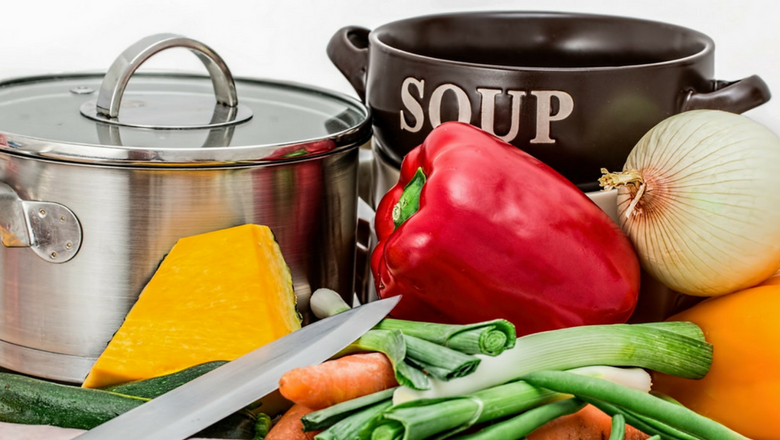Provided by Pathways to Family Wellness magazine, published by ICPA, Inc. – John Marc, Pathways Contributor
Nutrition: 3 Concepts to Contemplate
1. Detoxification: It’s not just about what we take out, but what we put in.
Detoxing is a primary facet of improving health. There are many layers to this process: Chelation therapy, fasting, and ‘burning up’ toxins via herbs and spices, are a few possible methods to this process. However, deeper down lies the effort to rebuild all our bodily and cellular functions through diligent nutrition—by eating the correct foods in plentiful, almost copious, amounts. This will increase the body’s natural detoxification systems which are safer and will reach through all layers of our body and mind.
2. Fruits OR Vegetables.
I often read: “Eat more fruits and vegetables.” Almost always “fruit” comes first. Maybe it rolls off the tongue. But how do fruits compare to vegetables? And should fruits be listed first when considering their health importance? Fruits, like vegetables, contain a plethora of complex phytonutrients that are miraculous for our health. The dark side of most fruits is their history of hybridization which resulted in very high proportions of sugar. Fruits (even organic) require more pesticide use than vegetables, and additionally, the high amount of super phosphate fertilizer used on fruits, which causes rapid expansion in size as well as desirable colors, may in fact damage important nutritional elements. Imagine 100 years ago that a typical apple looked much smaller and tasted much more sour and bitter, and you will begin to see how fruit today is no longer what tradition has made it out to be.
3. Trust your body. It knows best.
Or does it? Modern eating habits are incentivized, in large part, by our body’s chemical inclinations. Consider, for instance, our craving for sugar. It would seem that biology has led many westerners down a road of havoc for their health. However, it is more accurate to say that our biology’s innate intelligence, which always prefers the correct type of food, has been numbed or disconnected. Chemically enhanced foods, the manipulation of cultural values through media, and chronic stress, have all contributed to this separation from our true biological preferences. How different would the world be if, through chiropractic care, nutrition, and overall stress reduction, everyone’s body regained the natural preferences, tastes, and inclinations that support health?
Italian Vegetable Soup Recipe:
What You’ll Need:
- 6 c chicken/vegetable broth
- 1 small onion, chopped
- 1 leek, rinsed thoroughly and chopped
- 6 cloves garlic, minced
- 2 large carrots, chopped
- 1 c. string beans, cut into thirds
- 4 small turnips, chopped
- 5 stalks celery, chopped
- 3 roma tomatoes, or 1 large heirloom (choose
- whatever is local or organic), cut into cubes
- 2 cups spinach, roughly chopped
- 1 can (16 oz.) cannellini beans, rinsed
- 2 T butter for sautéing
- 1 tsp dried basil
- 1 tsp dried oregano
- 1 tsp dried thyme
- About 1 T sea salt, or to taste
- 1 T fresh parsley
- 1 tsp freshly ground black pepper
- dash of cayenne, optional
- fresh chopped basil to top
- sour cream or Parmesan for topping, optional
What to Do:
- In your stock pot, melt 2 tablespoons of butter and sweat your onions and leeks. Add garlic and mix.
- Add carrots, string beans, turnips, celery and sauté until slightly soft. Add tomatoes, dried basil, dried oregano, dried thyme, salt, pepper and fresh parsley.
- Cook for a few minutes.
Pour in your broth and let simmer for about 20 minutes or until all vegetables are cooked and soup is boiling. Taste and add more seasoning if needed. - Add your spinach and cannellini beans and cook for another 10 minutes or until spinach has wilted.
- Serve topped with fresh basil and a dollop of sour cream or cheese if desired.
Serves 4-6

